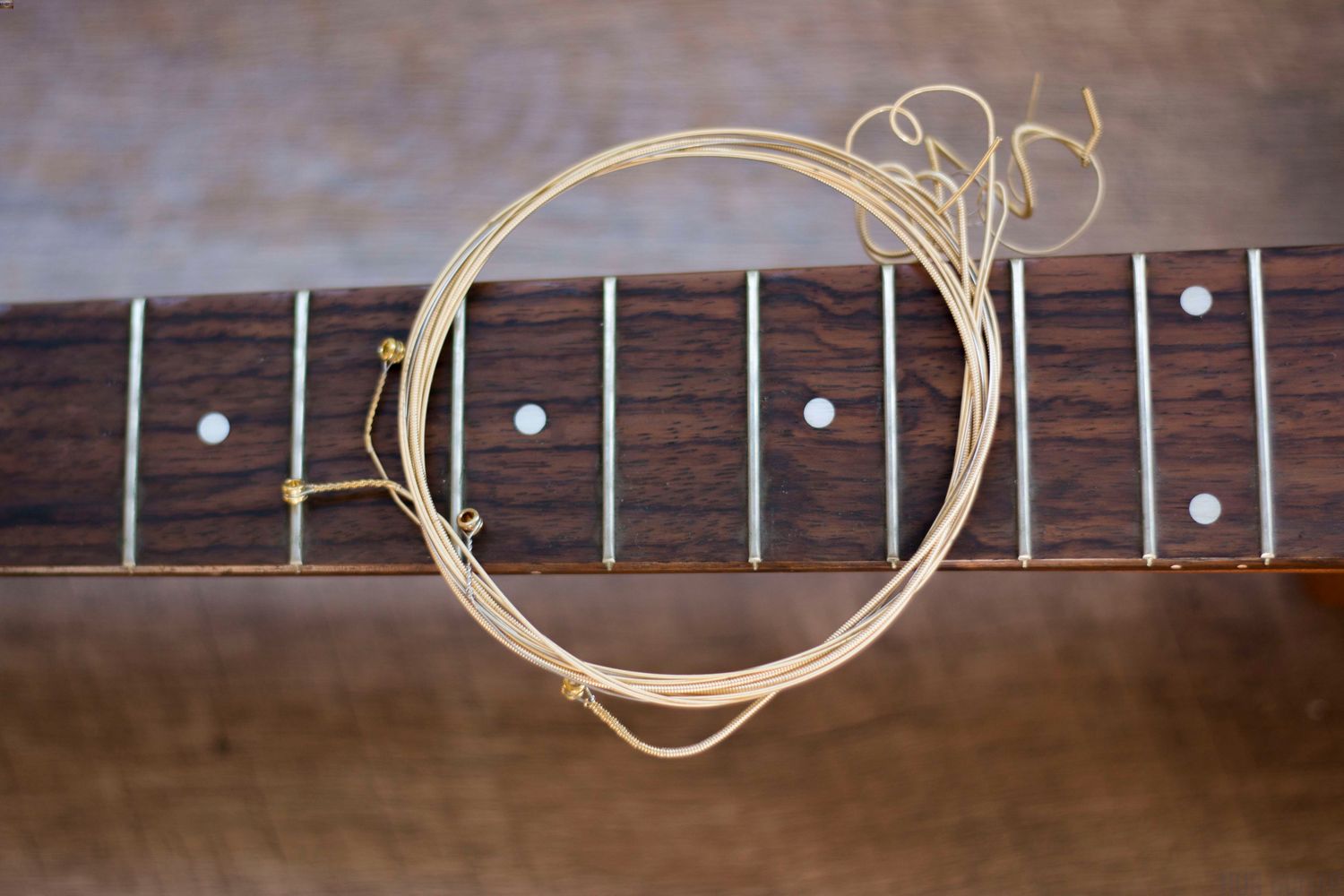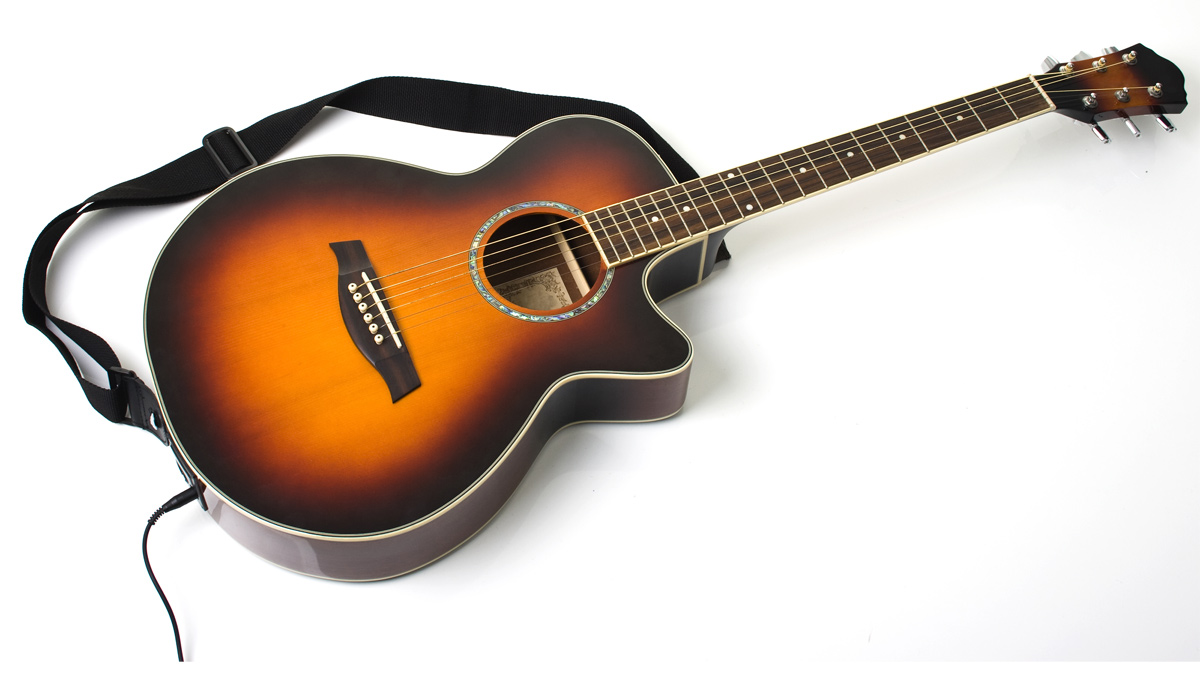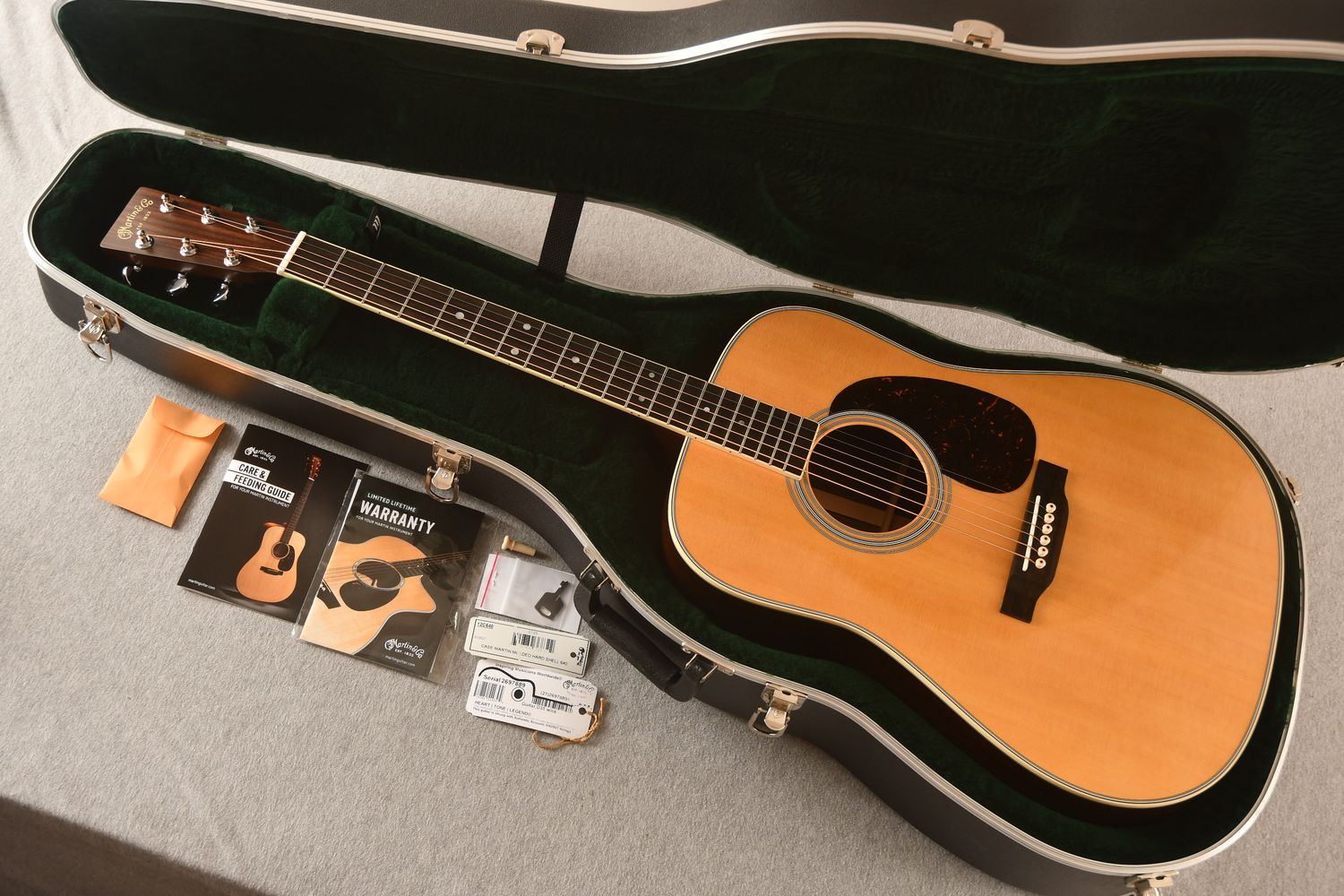Home>Production & Technology>Acoustic>What Size Acoustic Guitar For A 6-Year-Old


Acoustic
What Size Acoustic Guitar For A 6-Year-Old
Published: March 11, 2024
Find the perfect acoustic guitar size for your 6-year-old. Get expert tips on choosing the right acoustic guitar for young beginners.
(Many of the links in this article redirect to a specific reviewed product. Your purchase of these products through affiliate links helps to generate commission for AudioLover.com, at no extra cost. Learn more)
Table of Contents
Introduction
Choosing the right acoustic guitar size for a 6-year-old is a crucial decision that can significantly impact their musical journey. The proper fit ensures comfort, ease of play, and overall enjoyment, setting the stage for a lifelong love of music. As a parent or guardian, navigating the myriad of options can be overwhelming, but fear not! This comprehensive guide will walk you through the essential factors to consider and provide valuable tips for selecting the perfect acoustic guitar size for your young aspiring musician.
Ensuring that the guitar is proportionate to the child's size and age is paramount. A poorly fitted instrument can lead to discomfort, frustration, and potential discouragement. By understanding the key considerations and recommended sizes, you can empower yourself to make an informed decision that will set the stage for a positive and fulfilling musical experience for your child.
In the following sections, we will delve into the factors to consider when choosing an acoustic guitar for a 6-year-old, explore the recommended sizes, and offer practical tips to guide you through the selection process. Whether your little one is expressing interest in strumming their first chords or you're seeking to surprise them with a musical gift, this guide will equip you with the knowledge needed to make a well-informed and thoughtful choice. Let's embark on this harmonious journey and ensure that your young musician's hands are perfectly poised to create beautiful melodies on their new acoustic guitar.
Factors to Consider
When selecting an acoustic guitar for a 6-year-old, several crucial factors come into play to ensure a harmonious and comfortable playing experience. Understanding these considerations will guide you in making an informed decision that aligns with your child's musical aspirations and physical capabilities.
1. Size and Scale Length
The most fundamental factor to consider is the physical size of the guitar. A 6-year-old typically requires a smaller-sized instrument to accommodate their smaller stature. Opting for a guitar with a shorter scale length and a smaller body size ensures that the child can comfortably reach the frets and effectively maneuver the instrument. This promotes proper playing posture and reduces the risk of strain or discomfort during practice sessions.
2. Weight
The weight of the guitar is another critical consideration. A lightweight instrument is more manageable for a young child to hold and play for extended periods. It allows them to focus on learning and playing without feeling fatigued or burdened by the instrument's weight.
3. Action and String Tension
The action, which refers to the distance between the strings and the fretboard, and the string tension significantly impact playability, especially for young beginners. A guitar with lower action and lighter string tension is easier for small hands to press down on the frets, facilitating smoother chord transitions and fretting notes with minimal effort.
4. Sound Quality
While size and playability are paramount, the sound quality should not be overlooked. Look for a guitar that produces a pleasant and resonant tone, as this will inspire and motivate the young musician. A well-balanced and vibrant sound will captivate their interest and encourage regular practice and exploration of musical expression.
5. Durability and Build Quality
Given the youthful exuberance and occasional mishandling that may accompany a child's learning journey, durability is key. Opt for a well-constructed guitar made from sturdy materials that can withstand the inevitable bumps and knocks. A robust instrument will provide peace of mind, knowing that it can endure the enthusiastic strums and handling by a budding guitarist.
6. Visual Appeal
While not a technical consideration, the visual appeal of the guitar can greatly influence a child's enthusiasm for playing. Choosing a guitar with an attractive design or color that resonates with the young musician's preferences can further ignite their passion for learning and playing.
By carefully considering these factors, you can narrow down the options and select an acoustic guitar that perfectly suits your 6-year-old, setting the stage for a delightful and fulfilling musical journey.
Recommended Sizes
When it comes to selecting the right acoustic guitar size for a 6-year-old, it's essential to consider the recommended sizes that align with the child's physical dimensions and playing comfort. Several standard sizes are specifically designed to cater to young beginners, ensuring an optimal playing experience that fosters skill development and musical enjoyment.
-
1/4 Size Acoustic Guitar
- A 1/4 size acoustic guitar is an ideal option for 6-year-old beginners who are just embarking on their musical journey. With a scale length of approximately 19-20 inches, this compact instrument is well-suited for young children, allowing them to comfortably reach the frets and navigate the fingerboard with ease. The smaller body size and reduced overall dimensions make it a practical and ergonomic choice for budding guitarists.
-
1/2 Size Acoustic Guitar
- For 6-year-olds who may have slightly larger physical proportions or those who are showing a keen interest in learning the guitar, a 1/2 size acoustic guitar presents a suitable option. With a scale length of around 23-24 inches, this intermediate size provides a balance between playability and room for growth. It offers a comfortable playing experience while accommodating the developing skills and dexterity of young musicians.
-
3/4 Size Acoustic Guitar
- A 3/4 size acoustic guitar is well-suited for 6-year-olds who demonstrate a strong commitment to learning and playing the instrument. Featuring a scale length of approximately 24-25 inches, this size offers a slightly larger frame, providing room for progression and extended use as the child advances in their musical proficiency. The 3/4 size strikes a balance between playability and longevity, making it a versatile choice for young aspiring guitarists.
By considering these recommended sizes, you can narrow down the options and select an acoustic guitar that perfectly matches your 6-year-old's physical dimensions and playing comfort. Each size offers distinct advantages tailored to the developmental stage and musical enthusiasm of young beginners, ensuring that they can embark on their musical journey with a well-fitted and enjoyable instrument.
Tips for Choosing the Right Size
When it comes to choosing the right size acoustic guitar for a 6-year-old, several practical tips can guide you in making an informed and thoughtful decision. These tips encompass a holistic approach that considers the child's physical attributes, musical aspirations, and long-term comfort, ensuring that the selected instrument becomes a harmonious extension of their budding musical journey.
1. Physical Assessment
Begin by assessing the physical dimensions of the child. Measure their arm length, hand span, and overall stature to gauge the most suitable guitar size. This empirical approach provides valuable insights into the specific requirements for a comfortable and ergonomic playing experience. By aligning the guitar size with the child's physical attributes, you can ensure that they can comfortably reach the frets and handle the instrument with ease.
2. Hands-On Testing
Encourage the child to engage in hands-on testing of different guitar sizes. Visit a music store or seek out opportunities to try various guitars in person. This tactile experience allows the child to feel the differences in size, weight, and playability firsthand. Pay attention to their comfort level, posture, and ability to reach the frets and strum the strings. Observing their interaction with different guitar sizes provides valuable insights into which size resonates best with their physicality and playing style.
3. Consider Growth Potential
While it's essential to select a guitar size that suits the child's current physical dimensions, considering their growth potential is equally important. A slightly larger size that allows room for growth and extended use can be a strategic choice, especially for children who are enthusiastic about pursuing their musical interests over the long term. Balancing immediate comfort with future adaptability ensures that the selected guitar can accompany the child on their musical journey as they grow and develop their skills.
4. Seek Professional Guidance
Consulting with music educators, guitar instructors, or knowledgeable staff at music stores can provide valuable insights and recommendations. These experts can offer personalized guidance based on the child's age, physical attributes, and musical aspirations. Their expertise can help navigate the myriad of options and ensure that the selected guitar size aligns with the child's developmental stage and learning objectives.
5. Encourage Personal Preference
While technical considerations are crucial, the child's personal preference should not be overlooked. Involve them in the decision-making process and consider their aesthetic inclinations. Choosing a guitar with a design or color that resonates with the child's tastes can foster a sense of ownership and enthusiasm for their new instrument, further fueling their passion for learning and playing.
By incorporating these tips into the selection process, you can navigate the nuances of choosing the right size acoustic guitar for a 6-year-old with confidence and insight. This thoughtful approach ensures that the selected instrument becomes a harmonious companion in the child's musical endeavors, setting the stage for a fulfilling and enjoyable learning experience.
Conclusion
In conclusion, selecting the right acoustic guitar size for a 6-year-old is a pivotal decision that can shape their musical journey in profound ways. By considering factors such as size, scale length, weight, action, sound quality, durability, and visual appeal, parents and guardians can ensure that the chosen instrument aligns with the child's physical dimensions and musical aspirations. The recommended sizes of 1/4, 1/2, and 3/4 provide tailored options that cater to the developmental stage and playing comfort of young beginners, offering a harmonious balance between playability and room for growth.
Furthermore, practical tips such as conducting a physical assessment, engaging in hands-on testing, considering growth potential, seeking professional guidance, and encouraging personal preference empower decision-makers to make an informed and thoughtful choice. This holistic approach takes into account the child's physical attributes, long-term comfort, and personal inclinations, ensuring that the selected acoustic guitar becomes a harmonious extension of their budding musical journey.
Ultimately, the goal is to provide young aspiring musicians with a well-fitted and enjoyable instrument that inspires creativity, fosters skill development, and nurtures a lifelong love of music. By investing time and consideration into choosing the right acoustic guitar size for a 6-year-old, parents and guardians can lay the foundation for a positive and fulfilling musical experience, setting the stage for countless moments of joy, self-expression, and musical growth.
In the end, the harmonious resonance of a well-suited acoustic guitar in the hands of a 6-year-old musician symbolizes the beginning of a beautiful and transformative journey—one that holds the promise of creativity, learning, and the joy of creating music that resonates with the soul.











